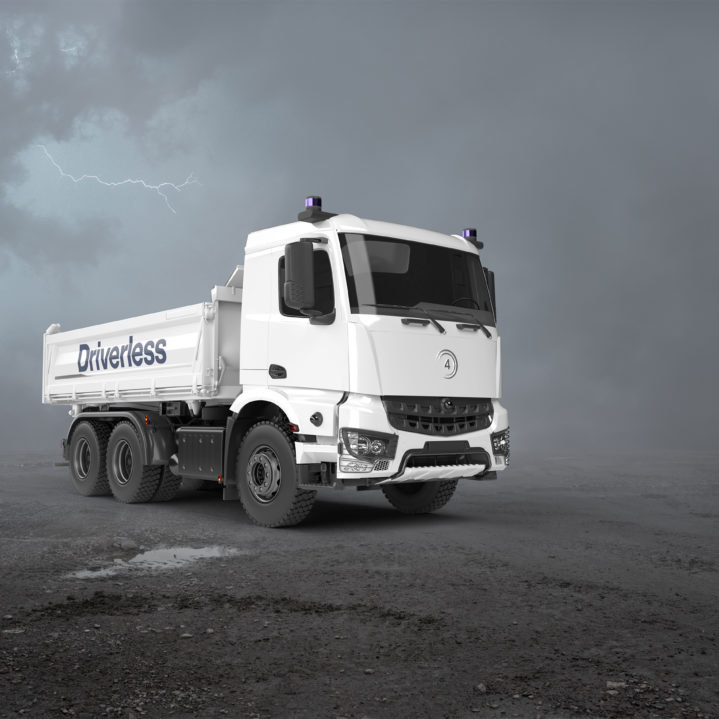Insight
CEO View – The Journey to Automated Vehicles in Industrial Sites

The Autonomous Driving Industry Needs to Demonstrate Traction
Sensible 4 was originally founded as an answer to a problem that has plagued the automated driving industry – the issue of weather. The idea was that if self-driving vehicles were ever going to become a reality they would have to work everywhere, all the time. This premise was already guiding some of our founders’ research back in the 1980s, so it seemed an obvious place to start when Sensible 4 was established in 2017.
Over the last five years, the need for safe, predictable, and reliable automated driving solutions has remained relatively constant, that is up until now. Today’s economic climate, and recent tech news, have shaken the automated driving industry. Gone are the days of hype, overpromising, and underdelivering. Today is about commercial viability, not in five or ten years’ time, but now. The industry, investors, and perhaps most importantly – the end customers – need to see solutions that are technologically and commercially viable in 2023-2024.
This poses a challenge; the legislation governing automated driving is fragmented at best. Take the EU for example, there is no single set of laws or standards that govern automated driving in member states. Different countries, different cities even, have different rules governing the parameters within which AD vehicles operate. This fragmentation restricts the ability of AD operators to scale. Without scalability, any business struggles to become viable. On one hand, we have the industry and investors demanding commercial viability, and on the other hand, we have AD operators unable to deliver due to a lack of regulation – how does the automated driving industry navigate these opposing forces?
Closed Road Environments Are Commercially Viable Today
The answer, for us, lies in the difference between open and closed road operations. The open roads where we drive, cycle, walk, or even run, are of course governed by extensive legislation. There are a multitude of variables, many of which are unpredictable, which the legislation is there to protect everyone against. Jaywalking, for example, poses a danger to all and is therefore illegal. Regrettably, the legalities are not enough to prevent such behaviour. This unpredictability, of those who do and do not follow the rules, represents a technological challenge to automated driving operators and their technology. From the perspective of AD, open roads pose two key challenges: the first is a lack of AD regulation to be able to operate in the first place, and the second is a need for the technology to be able to manage the unpredictability that comes with other road users, whether their behaviour is law-abiding or not.
Closed road environments, such as industrial sites, are an altogether different prospect. Industrial sites (factories, shipping terminals, mills, plants, logistics yards, and quarries) have a common approach and standards to match – meticulously drawn-up regulations that ensure safety always comes first. Everyone is a trained professional; adherence to safety protocol dictates every decision. The automated truck fits well into this picture of safety first and adherence to protocol.
It’s not just the site environment that lends itself well to automation; the very nature of the industrial site operation sees trucks drive at slow speeds, across short distances, continuously carrying out repetitive tasks. But automation can only work in these sites if the AD vehicle can contend with the weather and the environment itself. The quest for increased productivity cannot be constrained by rain, snow, dust, or mud; site operators require predictable operations that can run on demand or continuously. The opportunity for site operators to reliably increase productivity, through automation solutions that can be deployed today, creates the commercial viability that the industry, investors, and customers both expect and demand. So how close are we to realising the benefit of automation in the industrial segment?
Autonomous Driving Solutions Must Thrive in Tough Environmental Conditions
Last year, at Sensible 4, we released our first product; DAWN™ is a unique autonomous driving software platform that enables the automation of heavy-duty vehicles. DAWN™ enables our customers to build heavy-duty vehicles that can self-drive in the most demanding industrial environments (dust, mud, gravel) and weather conditions (snow, rain, wind). It’s a product that is developed based on the original logic for establishing Sensible 4 – enabling continuous automated driving, irrespective of the environmental and weather conditions.
Since launching DAWN™, we have partnered with industry leader UD Trucks to automate a heavy-duty Quon dump truck at a live industrial site in Japan. During the two-month project, at Kobe Steel’s Kakogawa Works, the Quon dump truck was able to drive and perform a series of autonomous operations successfully such as stopping, loading, and unloading the payload. From the Sensible 4 perspective, the project demonstrated that DAWN™ was successfully able to operate in the challenging industrial site conditions that it was designed for. From the UD Trucks’ perspective, Douglas Nakano, UD Trucks Senior Vice President and Chief Technology Officer, said: “This trial is another important milestone towards the future of the transport and we are very proud of it.”
The Path to Automation is Underpinned by Demand from Key Stakeholders
The successful completion of the project represents a hugely significant milestone for the future of automated transportation within the industrial segment. Unlike autonomous solutions for the open road, that remain in the distant future, the speed at which autonomy can be deployed in the closed industrial environment is immediate. The catalyst for this change is an overwhelming commitment, and need, from key stakeholders to develop and implement digital transformation at manufacturing and logistics sites. Site operators must address labour shortages, and improve efficiencies, to run sustainable business operations. OEMs are committed to sustainability and supporting their customers’ operations and processes. The missing ingredient to realise the change, up until now, has been the readiness of the autonomous driving technology.
The scale, commercial viability, and short timeframe in which the benefits of automation can be realised in the industrial segment are incredibly exciting. Whilst many things have changed over the last five years – the premise of automated vehicles being able to continually operate, irrespective of the weather or the environment, remains as important today as it did in 2017. The most exciting change is that our technology is ready to be deployed today and it has the potential to revolutionise mobility in the industrial segment globally.

CEO of Sensible 4

